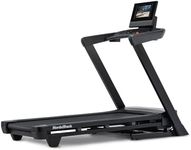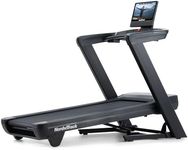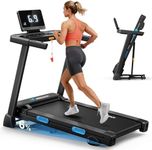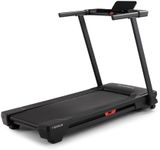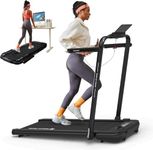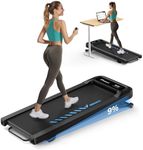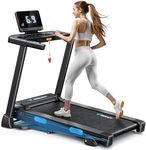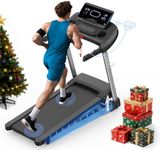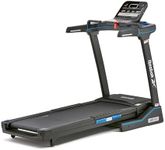Buying Guide for the Best Home Treadmills
Choosing the right home treadmill can significantly impact your fitness journey. It's important to consider various factors to ensure you get a machine that fits your needs, space, and workout preferences. Here are some key specifications to look at when selecting a home treadmill.Motor PowerMotor power, measured in horsepower (HP), determines the treadmill's ability to handle different speeds and user weights. A motor with higher HP is generally more durable and can support more intense workouts. For walking, a motor with 2.0 HP is sufficient, while running requires at least 3.0 HP. If you plan to use the treadmill for high-intensity training or if multiple people will use it, opt for a motor with higher HP.
Running SurfaceThe running surface, or belt size, is crucial for comfort and safety. A wider and longer belt provides more room to move, reducing the risk of tripping or falling. For walking, a belt size of 18 inches wide and 50 inches long is adequate. For running, look for a belt that is at least 20 inches wide and 60 inches long. If you have a larger stride or plan to do sprinting, a larger running surface is preferable.
Incline OptionsIncline options allow you to simulate uphill running, which can enhance your workout by increasing intensity and targeting different muscle groups. Most treadmills offer inclines from 0% to 15%. If you want to focus on building strength and endurance, choose a treadmill with a higher incline range. For general fitness, a moderate incline range will suffice.
Speed RangeThe speed range of a treadmill determines how fast you can go. For walking, a maximum speed of 6 mph is usually enough. For running, look for a treadmill that can reach at least 10 mph. If you plan to do interval training or sprinting, a higher maximum speed will be beneficial. Consider your fitness goals and choose a speed range that aligns with them.
CushioningCushioning refers to the shock absorption system of the treadmill, which can reduce the impact on your joints. Good cushioning is important for preventing injuries and providing a comfortable workout experience. If you have joint issues or plan to use the treadmill frequently, look for models with advanced cushioning systems. For occasional use, standard cushioning will be sufficient.
FoldabilityFoldability is an important feature if you have limited space. A foldable treadmill can be easily stored away when not in use, making it ideal for small homes or apartments. Check the ease of folding and the stability of the treadmill when folded. If space is a concern, prioritize foldable models.
Console FeaturesConsole features include the display and controls for tracking your workout progress, such as speed, distance, time, and calories burned. Advanced consoles may offer heart rate monitoring, preset workout programs, and connectivity options like Bluetooth or Wi-Fi. Consider what features are important to you and choose a treadmill with a console that meets your needs. If you enjoy tracking your progress or need motivation, a more advanced console will be beneficial.
Weight CapacityWeight capacity indicates the maximum user weight the treadmill can support. It's important to choose a treadmill with a weight capacity that exceeds your weight to ensure durability and safety. Most home treadmills have a weight capacity between 250 to 350 pounds. If multiple users will be using the treadmill, consider the highest weight among them and choose accordingly.
